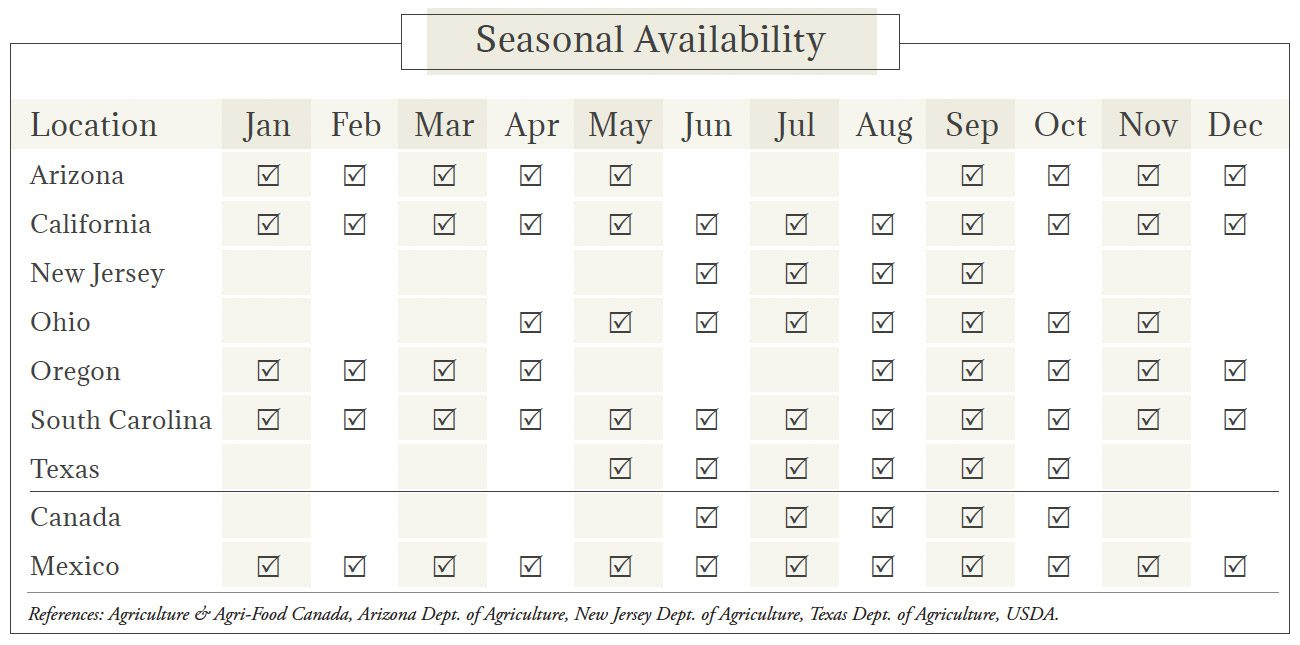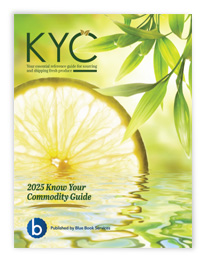Green Onion Market Summary

Image: digidreamgrafix/Shutterstock.com
Green Onion Market Overview
Green onions have been cultivated for centuries in various forms and are produced around the world. China is a significant producer and the United States ranks in the global top ten. Domestically, California leads production, with a handful of other states including Arizona, Georgia, Texas, and the Pacific Northwest contributing to annual supply. Imports from Mexico continue to rise to meet demand, especially during the U.S. off season. Green onions are often referred to as bunched or spring onions, salad onions, or scallions. Each refers to a densely planted, mild flavored, immature bulb onion of the common Allium cepa species. Many of today’s cultivars are hybrids of Allium cepa and Allium fistulosum (a Japanese bunching onion), which can produce either bulb or nonbulb plants. Day-length (short-day or long-day varieties dependent on hours of sunlight) influence growth characteristics, such as bulb development and size. Varieties vary greatly, but White Lisbon is widely grown; Crystal Wax, Ebenezer, Eclipse, Hishiko, Ishikura, Kincho, Sweet Spanish, Tokyo Long, White Globe, and White Portugal are among the many other varieties available for growers depending on region and market specifications.
The Cultivation of Green Onions
Green onions should be planted in mild climates with well-drained loamy soil and require regular irrigation during development. Due to shallow roots, plants are unable to compete with weeds. Plants are also vulnerable to wind, hail damage, and cold temperatures. Once onions reach from a quarter- to half an inch in diameter and tops reach 6 to 8 inches in height, harvest begins by hand. Green onions are gathered and banded into bunches. Due to high perishability, bunches should be cooled immediately. Tops are generally trimmed to market specifications.Pests & Diseases Affecting Green Onions
Insects of concern include armyworms, bulb mites, click beetles, cutworms, leafminers, leek moths, nematodes, onion maggots, and thrips. Green onions are susceptible to common diseases such as bacterial soft rot, bulb rot, damping off, downy mildew, grey mold, onion yellow dwarf virus, rust, smut, Southern blight, twister, white tip, and wilt.Storage & Packaging of Green Onions
Recommended storage temperature is 32°F with high humidity (95 to 100%) to maintain moisture, color, and overall quality. Green onions are sensitive to ethylene and can emit their own odor, which can be harmful to other fruits and vegetables. References: North Carolina State Extension, Oregon State University, U.S. Food & Drug Administration/University of California, Davis Western Institute for Food Safety & Security.
Grades & Good Arrival of Green Onions
There are two grades for green (bunched) onions, U.S. No. 1 and U.S. No. 2. For U.S. No. 1, product should be fairly well-formed, firm, tender, clean, free from decay, and free from damage caused by seed stems, roots, foreign material, disease, insects, and injury. Bulbs should be well trimmed and tops fresh, green, unbroken, and free of bruising. Bunches should have uniform clipped tops. Overall length should be from 8 to 24 inches and diameter from one-quarter to 1 full inch. For U.S. No. 2 green onions, product should not be badly misshapen, fairly ?rm, tender, clean, free from decay and from serious damage. Bulbs shall be fairly well trimmed, green, and free from serious damage. Length shall be not less than 8 inches and diameter not less than one-quarter inch or more than 1.5 inches.Generally speaking, the percentage of defects shown on a timely government inspection certificate should not exceed the percentage of allowable defects, provided: (1) transportation conditions were normal; (2) the USDA or CFIA inspection was timely; and (3) the entire lot was inspected.
| U.S. Grade Standards | Days Since Shipment | % of Defects Allowed | Optimum Transit Temp. (°F) |
| 10-5-2 | 5 4 3 2 1 | 15-8-4 14-8-4 13-7-3 12-6-2 10-5-2 | 32° |
Inspector's Insights for Green Onions
- Green onions shall be not more than 24 inches nor less than 8 inches in length; diameter shall not be less than .25 inches or more than 1 inch
- For discoloration score as damage when affecting an aggregate area of more than 20% or when materially affecting appearance
- Decay may affect tops or bulbs; any amount is scorable against the 2% tolerance for decay.
Green Onion Retail Pricing: Conventional & Organic Per Bunch



